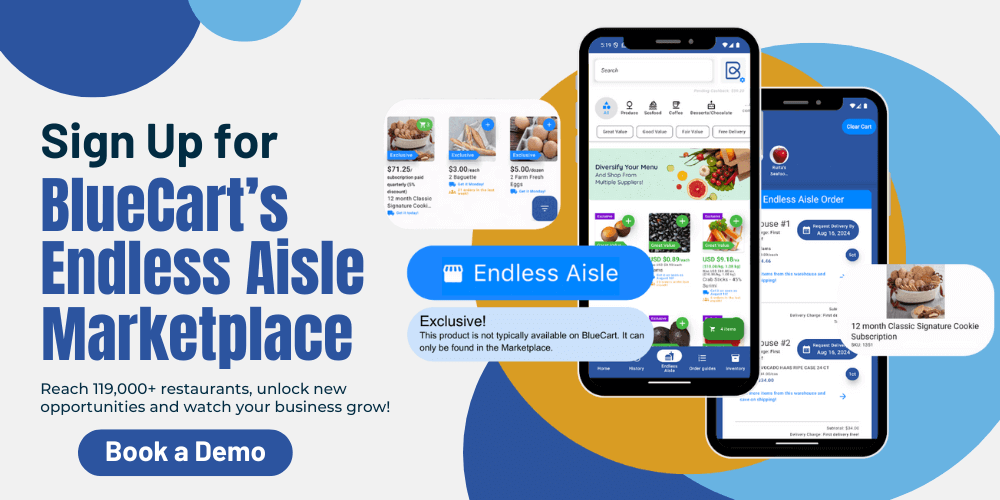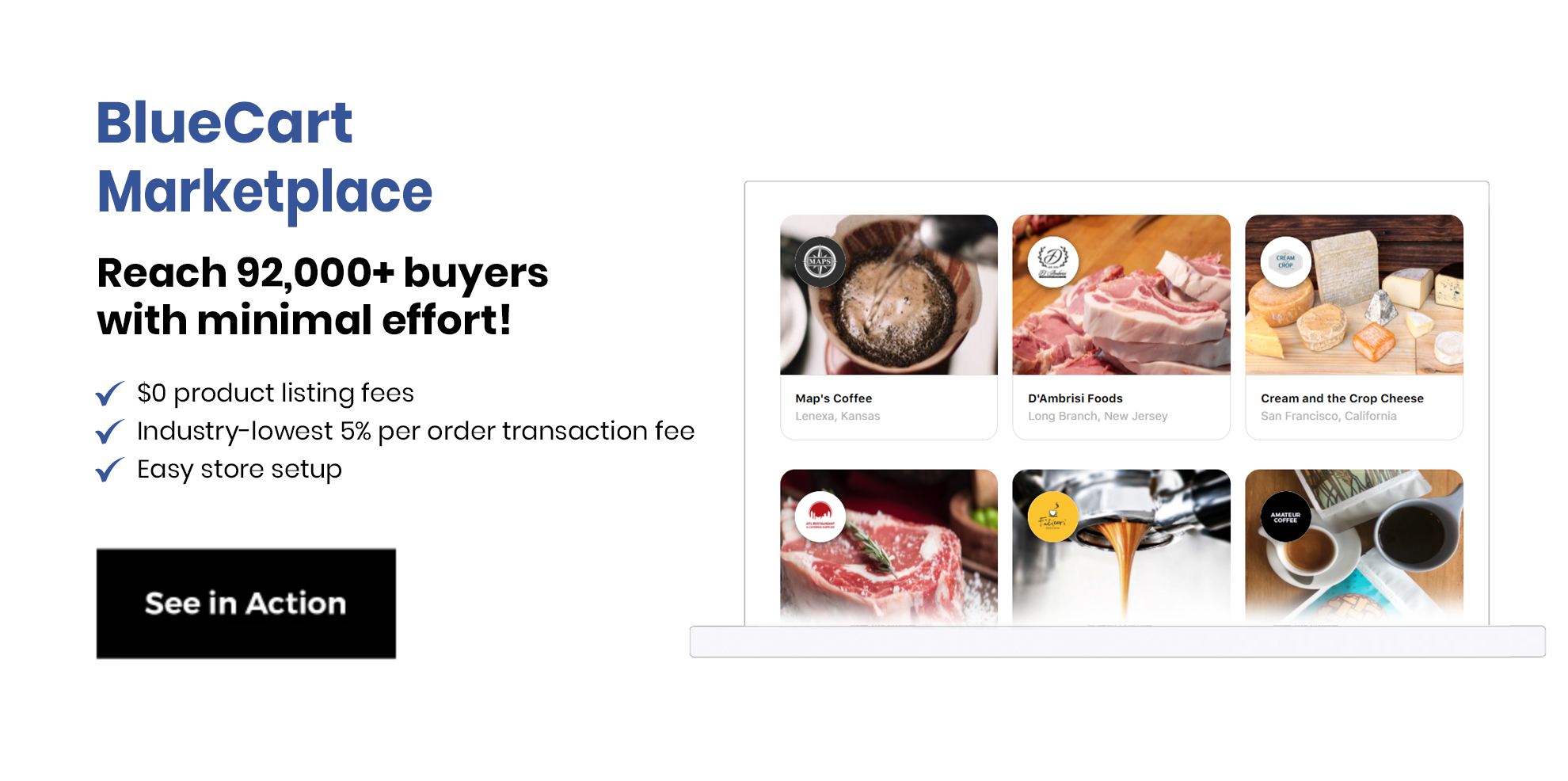Creating a business plan is essential when you’re opening a business. If you’re starting an eCommerce business, you’ll need an eCommerce business plan. With a seafood distribution business, you have to determine your seafood distribution channel ahead of time.
The seafood industry is growing thanks to the increase in health-conscious consumers. Seafood is always in demand whether it’s at restaurants or grocery stores.
As a seafood distributor, it’s important to have an understanding of what your niche market is and your ideal consumer. Part of this includes how you will reach these consumers. This is possible through your seafood distribution channel.

Seafood Distribution: What Is a Distribution Channel?
A distribution channel is the means by which products are sold to customers. These distribution channels are often business-to-business or direct-to-consumer. Products can often be sold through single or multiple channels.
The common business owner will determine their customer base and which channel to sell their products through based on the sales demand.
Ideal distribution channels can help businesses increase sales by:
- Helping tailor marketing campaigns based on industry needs
- Controlling channel conflicts
- Finding distributors and resellers that want to do business with them
- Identifying competitors in other industries

Your seafood distribution channel may be simple to identify. It may be based on identifying potential retailers that may sell your products as a middleman or the type of customer that may purchase your products for consumption.
Before choosing your ideal distribution channel, it’s important to do the proper market research. This includes a strategic analysis of the economic activity regarding seafood statistics, revenues, and product sales.
Be sure to understand the meaning of direct to consumer sales, the benefits of the DTC model, direct to consumer marketing, and common DTC trends. On the other hand, familiarize yourself with the B2B meaning, B2B eCommerce, b to b wholesale, and B2B vs B2C.
Key Takeaway: Identifying the ideal seafood distribution channel for your seafood business is essential. Two common distribution channels include direct to consumer and business to business.

Secure the Necessary Licensing Requirements
Most businesses require owners to obtain specific licenses in order to sell food. It’s best to check with your state licensing requirements to ensure that you have the up to date information.
For example, the state of Louisiana requires wholesale suppliers, such as fish distributors, fish factories, sellers, and processing plants to obtain a license. If your business is going to sell seafood in different states, you will have to check the requirements and regulations in each state.
Some requirements include having the necessary equipment and machinery to keep food items cold in the warehouse and during transportation. Be sure to update your licenses and permits in order to abide by all regulations in your state.
Finding Seafood Buyers
In the seafood industry, potential buyers include grocery stores, restaurants, seafood markets, specialty shops, and individual customers. It’s possible for buyers to place orders for the fresh or frozen seafood products they desire.
There are wholesale seafood vendors that only sell bulk fish options. Some wholesale seafood companies have lower MOQ quantities which mean individuals can buy smaller quantities of products for individual consumption.
If you have an online seafood store, you may consider offering a seafood subscription box or fish subscription box. This is one of the seafood business ideas you can consider expanding your company and customer base.
Your seafood buyers will vary based on the products you sell. These include fresh or frozen seafood, fin-fish, shellfish, and wholesale options. They may also vary based on your seafood distribution channel which includes eCommerce or brick and mortar.

Seafood Distribution: Direct to Consumer
One of the options for seafood distribution channels that businesses decide on is direct to consumer. Many seafood companies sell their catches directly to consumers. This is possible by selling from the boats or vessels themselves.
Selling seafood products from vessels or opening a food truck business to do so, is an affordable way to tap into the industry. This kind of distribution is best for businesses that are looking to sell to consumers for their own personal consumption.
Consumers that purchase seafood for personal consumption include individuals that are looking to make meals for themselves or their families. When selling from a vessel or food truck, it’s necessary to pay attention to food safety regulations. This will ensure the quality of each product.
Marketing for the direct to consumer seafood distribution channel is possible through print and digital marketing options. Print marketing refers to posters, flyers, and similar materials. These can be combined with artwork and images to make them more appealing.
Social media marketing for seafood distribution is similar to social media marketing for restaurants. It’s important to choose the right platform for your business based on your ideal target market. Through social media, you can improve your customer reach and brand awareness.
Seafood Distribution: Business to Business
Another common seafood distribution channel is business to business sales. This is when one business, such as a wholesale seafood supplier, sells to another business, such as a grocery store or market.
Other businesses will purchase large quantities of seafood products at a cheaper price in order to sell them individually or in smaller quantities for a premium price. The grocery stores and similar businesses act as the middleman between the wholesalers and the customers.

Frequently Asked Questions About Seafood Distribution Channels
In order to run a successful business, you need to know who your ideal customer is and how to sell to them. This is possible by identifying your distribution channel. When it comes to seafood distribution channels, there are a few options to choose from, including direct to consumer and business to business.
To better understand seafood distribution channels, read the following commonly asked questions:
Where Can I Sell Seafood Online?
You can sell seafood online through your own website or through other online platforms such as Shopify. To successfully sell food products online, it’s important to provide a positive customer experience. This is possible by offering order tracking, expedited shipping options such as overnight shipping, and affordable shipping fees.
Learn more: What is expedited shipping?
How Do I Price Seafood?
The price of seafood will vary based on the season and the availability of the type of fish. Other factors may also play a factor in the price of seafood including the quality of the fish, the source location, and the water pollution.
To correctly price your seafood, it’s best to perform the necessary market research and analyze competitor prices. Be sure to also calculate your profit margin to ensure that you will make money with the prices you set for your customers.
What Are Two Seafood Distribution Channels?
Two common seafood distribution channels include direct to consumer and business to business. The ideal sales channel will depend on who your target market is.